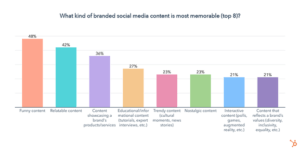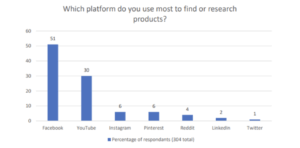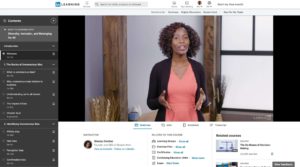(This article was originally published at HubSpot.com. It has been edited for content and style.)
 Marketing is all about meeting people where they are—and often, they’re on social media. For this reason, it’s the perfect vehicle for product discovery. Of course, not all social media platforms are created equal, especially when it comes to product discovery. So, if you’re looking to pinpoint the platforms consumers use the most for product research, you’ve come to the right place.
Marketing is all about meeting people where they are—and often, they’re on social media. For this reason, it’s the perfect vehicle for product discovery. Of course, not all social media platforms are created equal, especially when it comes to product discovery. So, if you’re looking to pinpoint the platforms consumers use the most for product research, you’ve come to the right place.
What is shopper research?
Shopper research examines how, when and where customers interact with brands to give companies a better understanding of the consumer journey from discovery to conversion.
Shopper research is critical for a better understanding of the customer journey from initial searches to website visits and eventual purchases. Plus, the advent of digital-first and mobile-first interactions has made this research even more important as the customer journey now includes multiple paths and touch-points from start to finish.
For example, prospective buyers might hear about your brand from a friend, do their product research on social media and then interact with your e-commerce store through their mobile device.
Understanding all touch-points along this journey can help companies create more seamless and streamlined experiences for consumers and increase overall ROI.
Top social media channels consumers use for product discovery
Twenty two percent of consumers prefer to discover new products via social media, according to HubSpot’s 2022 State of Consumer Trends Report. Let’s take a closer look at the channels they leverage for product research:
Gen z
Fifty seven percent of gen z have discovered new products on social media in the past three months and 71% say it’s where they most often discover products. Almost half (49%) of gen z consumers prefer to discover new products via Instagram Stories. This isn’t too surprising when you consider 90% of people follow a business on Instagram. On top of that, gen z ranks Instagram as their favorite social media app.
In second place, 41% want to discover new products through a short-form video—such as a TikTok or Instagram Reel. Since these platforms pull a younger audience, this adds up.
Millennials
Millennials prefer to discover new products via feed or story posts. This could be anything from an Instagram story to a Facebook post. Facebook, in particular, is the social app millennials visit the most, followed closely by YouTube.
On top of that, millennials also like to discover new products through short-form videos (36%).
Gen x
Gen x discovers new products on social media more frequently than any other channel, even though it isn’t preferred. Like millennials, they’re most likely to find new products via feed or story posts.
Interestingly, this age group likes to discover new products through short-form videos (41%) in equal measure to gen z. It’s clear that short, snackable content is appealing to this demographic. In fact, 36% of TikTok users in 2021 were between 35 and 54 years old, a 10% increase from the year before.
Baby boomers
Social media falls flat for boomers—a slim 17% have discovered a product on it in the past three months and only 4% have purchased a product on a social app in that time.
That said, of those who use social media, 42% prefer to discover new products via feed posts. The platforms they visit the most are Facebook, YouTube, Instagram and Pinterest.
What types of product content do consumers watch or engage with?

If you’re looking to leverage social media, it’s a good idea to know what types of branded content consumers enjoy.
Nearly half of consumers (48%) find funny content the most memorable, followed by relatable content. Additionally, making content that showcases your product or service—such as a demo, review or tutorial—is also highly memorable to 36% of consumers.
Social media research habits

To learn more about the social networks people prefer to surf for product research, I conducted a poll of 304 people using Lucid Software.
At first glance, the survey data seems simple: Facebook is far and away the market leader when it comes to product research and eventual purchasing, followed by YouTube.
But that’s not the whole story. Part of the reason Facebook and YouTube rank so highly for product research is because of their massive user base—for example, Facebook has three times the user base of Instagram, despite being owned by the same company.
It’s also worth noting that while Facebook marketing appeals to a broader audience for product research, volume alone doesn’t guarantee conversion. Users on Pinterest, TikTok and Reddit tend to be much more engaged with their social community—meaning that if your brand can capture their attention you can create substantive consumer loyalty.
LinkedIn, meanwhile, relies on authenticity and authority to inspire confidence, while Twitter is all about what’s trending right now.
Which social media platform should you market products on?
Facebook has a whopping 2.7 billion active daily users and has been around since the early 2000s. Its audience includes multiple age groups and spans the globe, making it a solid place for most brands to market themselves.
Most importantly, 78% of U.S. consumers discover new products on Facebook, more than any than other platform.
When it comes to marketing your product, you have many free and paid options on Facebook. Here are a few examples of each.
Free promotion
By now, you probably know that any company can create a Facebook Business Page. Once you create a business page, you can share posts about your products and offerings. If you have happy customers, you can even ask them to review your business on Facebook so prospects researching you can see how you’ve pleased your customers in the past.
Aside from creating a page to highlight your brand, you can also post your products in Facebook’s Marketplace. Marketplace listings can include product shots, pricing, product specifications and purchasing information. Although individual users often use the Marketplace to sell items they no longer want to other people, Facebook Business pages are also eligible to use this feature.
You should also consider talking about your products or offerings on Facebook Stories. This might take a little extra effort because it will require you to film or create content in the Story format, but it can help you better connect with prospective buyers who want a better sense of what your brand is about.
Paid promotion
Because Facebook’s feed algorithmically favors posts from individual accounts over businesses, you might decide that you want to put money into Facebook Ads.
Facebook Ads has a solid track record. It’s estimated that 10 million businesses were advertising on the platform in 2021.
With Facebook Ads, you can create advertisements with a certain goal in mind, such as conversions or in-store foot traffic. The detailed ads software also allows you to target specific audience demographics.
As a Facebook advertiser, you can either promote a post you’ve already created to ensure that it shows up on feeds of users in your demographic, or you can create native ads that might show up in feeds or on Facebook’s sidebars. While promoted posts look like an average post with a simple tag stating they are promoted, the native ads look more like traditional ads to make it clear to users that the content they’re seeing is paid for.
If you want to launch video-based ads, Facebook also allows you to promote video content or buy in-stream ad placements that appear in Facebook Live videos or longer videos that other users have uploaded.
Although Instagram ranked in third place in the poll above, you shouldn’t disregard it—especially if you’re targeting gen z or millennials who make up the platform’s primary audience.
For years, Instagram’s visual layout has made it a hot spot for influencer marketing. Influencers regularly post sponsored photos and videos about their experiences with products. Like YouTube, these influencers also regularly publish video posts or Stories that present tutorials, reviews and unboxings related to a product.
Aside from influencer marketing, many brands also promote their products on Instagram Stories, Instagram Live and through standard video or photo posts on Instagram Feed.
Along with free strategies, Instagram now offers Shoppable posts. With Shoppable posts, you can promote a product in an Instagram post that links to your Facebook Catalog.
To be eligible for Shoppable posts, you must have an Instagram Business page that’s linked to a Facebook catalog. This feature is also only for businesses selling physical goods.
LinkedIn’s platform, which emphasizes networking and career-related chatter, might be well-suited for product marketing in B2B, academic or professional industries. People who do product research on this platform might be looking for a service, tool or software that can either escalate their careers or make workdays easier.

If you’re marketing products like software, online courses, business-related publications or anything that can help a professional or student do their job better, LinkedIn will be a great fit for you. However, if you sell more general, consumer-facing products like makeup or home decorations, you might want to put more marketing effort into other platforms on this list—like Facebook or Instagram.
While the professional nature of LinkedIn and its audience might not be suited for all brands, the platform still offers a variety of opportunities for brands to leverage it. For example, research shows that 80% of B2B leads come straight from LinkedIn.
LinkedIn is very similar to Facebook in that you can post about your product or service for free, or purchase ads or post promotion to get information about your business front and center on feeds.
Twitter has approximately 200 million daily users from a variety of backgrounds, geographic locations, and industries. Its broad demographic might provide solid marketing opportunities to many different types of businesses. Because of its broad user base, you might want to create an account on Twitter and post regularly for brand awareness.
If you’re interested in video marketing, you can also experiment with Twitter’s live video feature and use it to film a tutorial or Q&A related to your product.
Aside from posting about your product for free, you can also pay into targeted ads or promoted tweets. Twitter claims that its advertising ROI is 40% higher than some other social channels.
While the ROI of Twitter advertising and its user base sounds promising, you might be wondering why it ranked so low on the poll shown above.
Ultimately, what might make Twitter rank last is its trend-oriented nature. The platform encourages people to connect with each other and post tweets or comments about current events, trending hashtags or their thoughts on other specific topics.
Brands and product discussion are both prevalent on the platform, but users might go to Twitter to learn more about what’s going on in the world, rather than new products. When people are asked to pick which platform they do the most product research on, it’s not surprising that Facebook or YouTube might seem like a more obvious choice than Twitter.
While you should be on Twitter due to its sheer user base and advertising ROI, you’ll want to keep its audience’s need to stay trendy and informed in mind as you’re creating posts and advertisements for the platform. This might help you make social content that both engages these audiences while still weaving in information about how valuable your product is.
Identifying the right platforms for product marketing
While running ads and product promotions on any social platform can help drive conversion, it’s a good idea to focus on platforms with audiences that already align well with your brand.
For example, broader audiences are actively looking for products or researching brands on Facebook, Instagram, YouTube and Pinterest while Reddit and Twitter users tend to be more trend-focused. Similarly, if you’re marketing a B2B company, you might see a better ROI from ads on a professional network—like LinkedIn—than ads on a more consumer-friendly platform like Instagram.
